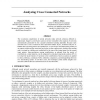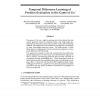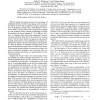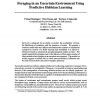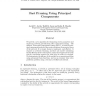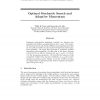NIPS
1993
15 years 2 months ago
1993
We consider the problem of how the CNS learns to control dynamics of a mechanical system. By using a paradigm where a subject's hand interacts with a virtual mechanical envir...
139
click to vote
NIPS
1993
15 years 2 months ago
1993
The non-linear complexities of neural networks make network solutions difficult to understand. Sanger's contribution analysis is here extended to the analysis of networks aut...
107
click to vote
NIPS
1993
15 years 2 months ago
1993
The game of Go has a high branching factor that defeats the tree search approach used in computer chess, and long-range spatiotemporal interactions that make position evaluation e...
NIPS
1993
15 years 2 months ago
1993
NIPS
1993
15 years 2 months ago
1993
This paper introduces GNARL, an evolutionary program which induces recurrent neural networks that are structurally unconstrained. In contrast to constructive and destructive algor...
107
click to vote
NIPS
1993
15 years 2 months ago
1993
We propose a learning algorithm for a variable memory length Markov process. Human communication, whether given as text, handwriting, or speech, has multi characteristic time scal...
100
click to vote
NIPS
1993
15 years 2 months ago
1993
Parti-game is a new algorithm for learning feasible trajectories to goal regions in high dimensionalcontinuousstate-spaces. In high dimensions it is essential that learningdoes not...
NIPS
1993
15 years 2 months ago
1993
NIPS
1993
15 years 2 months ago
1993
We present a new algorithm for eliminating excess parameters and improving network generalization after supervised training. The method, \Principal Components Pruning (PCP)",...
120
click to vote
NIPS
1993
15 years 2 months ago
1993
Stochastic optimization algorithms typically use learning rate schedules that behave asymptotically as (t) = 0=t. The ensemble dynamics (Leen and Moody, 1993) for such algorithms ...

